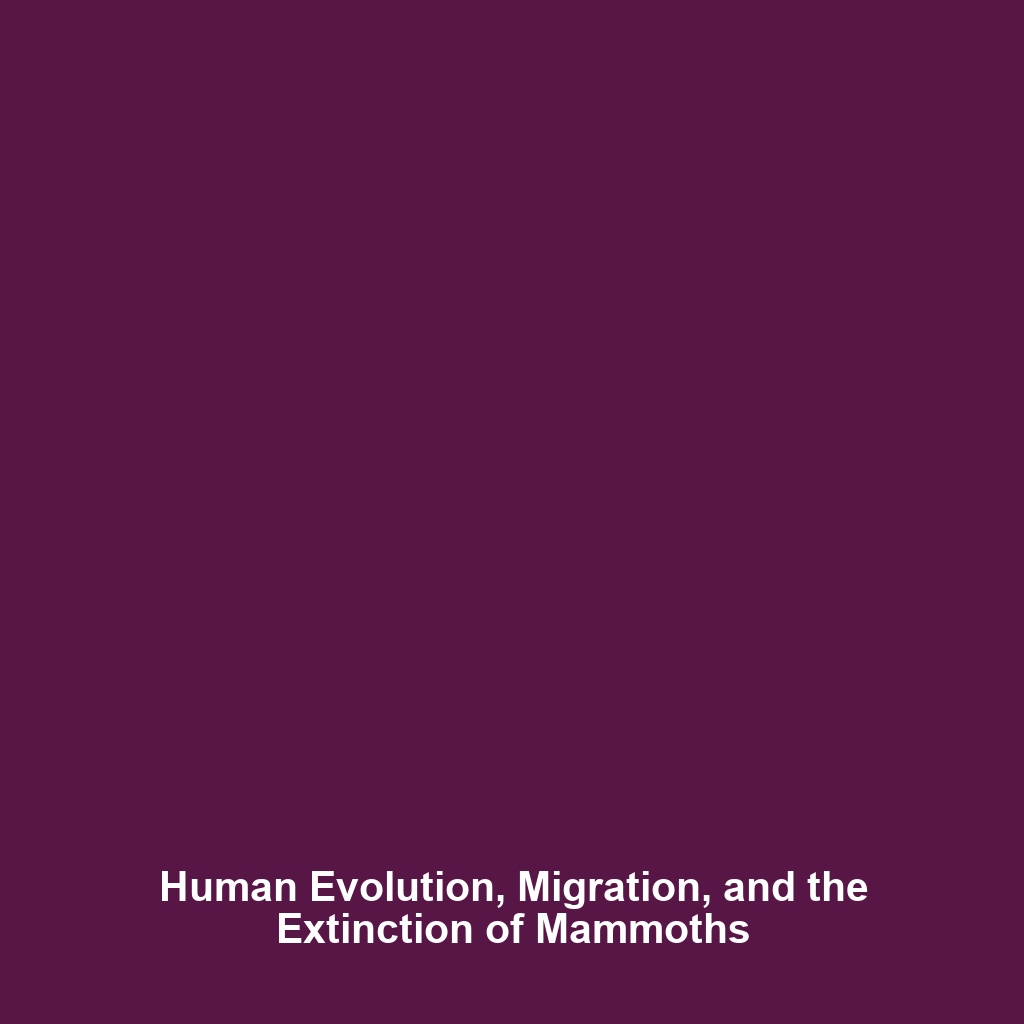Impact on Human Evolution and Migration, and the Extinction of Large Mammals
Introduction
The relationship between climate, human evolution, and the extinction of large mammals like mammoths is a crucial area of study within the realm of Climate History. The variations in climate throughout history have driven significant shifts in human behavior and migration patterns, while simultaneously influencing the survival of megafauna. Understanding these dynamics helps us not only to study our past but also to anticipate future challenges related to climate change.
Key Concepts
Human Evolution
Climate has played a fundamental role in shaping human evolution. Key concepts include:
- Adaptation: Early humans adapted to changing climatic conditions, which affected their physical and social structures.
- Migration: Climatic shifts prompted migrations out of Africa and across continents, as humans sought favorable living conditions.
Extinction of Large Mammals
The extinction of large mammals such as mammoths primarily occurred due to:
- Climate Change: Rapid climate changes led to the loss of habitats and food sources for megafauna.
- Human Activity: Early hunting practices may have exacerbated the effects of climate change on these species.
Applications and Real-World Uses
Understanding the impact on human evolution and migration and the extinction of large mammals like mammoths has several real-world applications:
- Conservation Efforts: Insights from past extinctions inform contemporary conservation strategies aimed at preventing future losses.
- Climate Policy: Historical data assists in shaping policies that address current climate change impacts on species survival.
Current Challenges
Researchers face numerous challenges in studying these topics, including:
- Data Limitations: Fossil records and ancient data are often sparse or fragmented, complicating accurate analysis.
- Attribution Difficulties: Disentangling the effects of climate change from human influence on extinction events is complex.
Future Research and Innovations
The field is evolving rapidly, with exciting future avenues for research and innovation:
- Genetic Studies: Advanced genetic analysis can provide deeper insights into the relationships between extinct species and modern humans.
- Climate Modeling: Improved climate models can simulate past environments, aiding predictions about future species responses to climate change.
Conclusion
In summary, the impact of climate on human evolution and migration, along with the extinction of large mammals like mammoths, is pivotal in understanding Climate History. This knowledge not only guides conservation and policy efforts today but also informs us about the resilience of life amid climatic changes. To learn more about the intricate connections between climate and species, explore related topics on our website.
